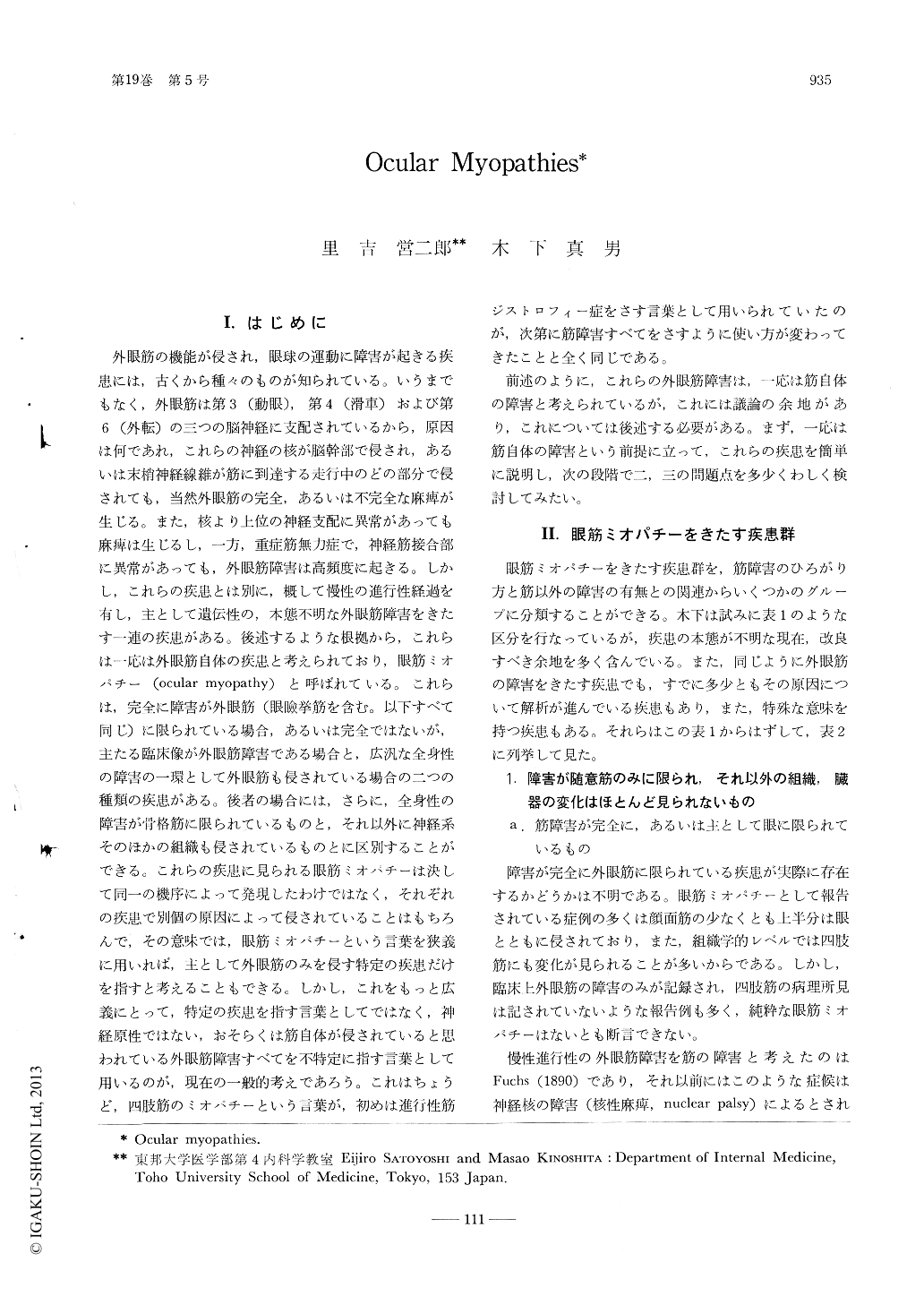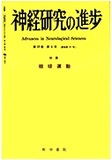- 有料閲覧
- 文献概要
- 1ページ目
I.はじめに
外眼筋の機能が侵され,眼球の運動に障害が起きる疾患には,古くから種々のものが知られている。いうまでもなく,外眼筋は第3(動眼),第4(滑車)および第6(外転)の三つの脳神経に支配されているから,原因は何であれ,これらの神経の核が脳幹部で侵され,あるいは末梢神経線維が筋に到達する走行中のどの部分で侵されても,当然外眼筋の完全,あるいは不完全な麻痺が生じる。また,核より上位の神経支配に異常があっても麻痺は生じるし,一方,重症筋無力症で,神経筋接合部に異常があっても,外眼筋障害は高頻度に起きる。しかし,これらの疾患とは別に,概して慢性の進行性経過を有し,主として遺伝性の,本態不明な外眼筋障害をきたす一連の疾患がある。後述するような根拠から,これらは一応は外眼筋自体の疾患と考えられており,眼筋ミオパチー(ocular myopathy)と呼ばれている。これらは,完全に障害が外眼筋(眼瞼挙筋を含む。以下すべて同じ)に限られている場合,あるいは完全ではないが,主たる臨床像が外眼筋障害である場合と,広汎な全身性の障害の一環として外眼筋も侵されている場合の二つの種類の疾患がある。
There have been various diseases accompanied by ocular myopathy or chronic progressive exter-nal ophthalmoplegia. Based on the severity of co-existing disturbance of organs or tissues other than extraocular muscles, an attempt was made to classify those diseases into three different groups: pure ocular myopathy or myopathy of ocular and other voluntary muscles without any evidence of involvement of other tissues (group I), ocular myopathy together with disturbance of a few other organs or tissues (group Ⅱ), and ocular myopathy with multisystemic disorders (group Ⅲ).

Copyright © 1975, Igaku-Shoin Ltd. All rights reserved.


